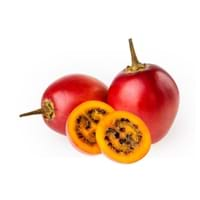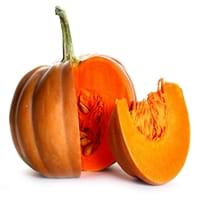Health Benefits
Cancer prevention, Improves eye vision, Prevents diabetes, Prevents high blood pressure
Arthritis treatment, Cancer prevention, High Cholesterol Regulation, Lower blood pressure, Helps Prevent cataract, Prevents gall stones, Ulcer treatment, Weight loss properties
General Benefits
Cures inflamed tonsils, Helps in weight loss, Maintains healthy cholesterol level
Boosts respiratory health, Eliminate parasites and infections, Protects against birth defects, Strengthens bones
Skin Benefits
Anti-aging benefits, Protects skin from oxidative stress
Heals sunburn, Hydrates skin, Skin rejuvenation
Hair Benefits
Protects hair
Regulates hair growth
Allergy Symptoms
Anaphylaxis, Coughing, Diarrhea, Eczema, Hives, Itching sensation in throat, Nausea, Skin Rashes, Runny nose, Sneezing, Swelling of mouth, tongue or lips, Vomiting, Wheezing
Abdominal cramps, Anaphylaxis, Digestive Problems, Dizziness, Eczema, Fainting, Hives, Inflammation, Itching, Tingling sensation in wrist and face, Vomiting, Wheezing
Side Effects
Heart burn
Kidney and gallbladder diseases
Best Time to Eat
Along with meal, As a snack in the late afternoon, Don't consume at night and before bed, Don't eat after meal, Morning time (before lunch)
Along with meal, Don't eat after meal, Morning time (before lunch)
Vitamin B5 (Pantothenic Acid)
Vitamin C (Ascorbic Acid)
Vitamin K (Phyllochinone)
Calories in Fresh Fruit with Peel
Not Available
Calories in Fresh Fruit without Peel
Calories in Frozen Form
Not Available
Not Available
Calories in Dried Form
Not Available
Type
Fruit vegetable
Berry
Season
All seasons
All seasons
Varieties
Tamarillo bold gold, Tamarillo red beau, Tamarillo tango and Tamarillo teds red
Jarrahdale, Peanut, Lakota, Cow, Sugar, Caribean, Red kuri, Buttercup and Pink lady
Color
Orange, Red, Yellow
Blue, Green, Orange, Red, White
Inside Color
Creamy Yellow
Creamy Yellow
Taste
Tangy, Tart
Creamy, Soft, Sweet
Origin
South Africa
Mexico
Soil Type
Sandy loam, Well-drained
Clay loam, Sandy loam, Well-drained
Climatic Conditions
Rainfall, Warm
Warm to hot climate
Facts about
- Up until 1967, tamarillos were referred to as tree tomatoes.
- The name tamarillo is derived from Maori word 'tama' which means leadership and rillo from spanish word 'amarillo' which means yellow.
- The name pumpkin has its roots in the Greek word ‘pepon’, meaning ‘large melon’.
- The largest pumpkin ever grown weighed 1,140 pounds.
- Pumpkins were once known for removing freckles & curing snake bites.
Top Producer
New Zealand
China
Other Countries
Australia, Chile, Colombia, Malaysia, Peru, Philippines
Egypt, India, Indonesia, Iran, Italy, Mexico, Russia, Spain, United States of America
Top Importer
United States of America
United States of America
Top Exporter
New Zealand
China
Botanical Name
Solanum betaceum
Cucurbita maxima
Synonym
tree tomato, genus Cyphomandra, Cyphomandra
Cucurbita pepo, Squash
Subkingdom
Tracheobionta
Tracheobionta
Division
Magnoliophyta
Magnoliophyta
Class
Magnoliopsida
Magnoliopsida
Subclass
Asteridae
Dillenhidae
Order
Solanales
Cucurbitales
Family
Solanaceae
Cucurbitaceae
Species
Solanum betaceum
Cucurbita mixta
Generic Group
Nightshade
Not Available
Difference Between Tamarillo and Pumpkin
We might think that Tamarillo and Pumpkin are similar with respect to nutritional value and health benefits. But the nutrient content of both fruits is different. Tamarillo and Pumpkin Facts such as their taste, shape, color, and size are also distinct. The difference between Tamarillo and Pumpkin is explained here.
The amount of calories in 100 gm of fresh Tamarillo and Pumpkin with peel is Not Available and 26.00 kcal and the amount of calories without peel is 31.00 kcal and 30.00 kcal respectively. Thus, Tamarillo and Pumpkin belong to Low Calorie Fruits and High Calorie Fruits category.These fruits might or might not differ with respect to their scientific classification. The order of Tamarillo and Pumpkin is Solanales and Cucurbitales respectively. Tamarillo belongs to Solanaceae family and Pumpkin belongs to Cucurbitaceae family. Tamarillo belongs to Solanum genus of Solanum betaceum species and Pumpkin belongs to Cucurbita genus of Cucurbita mixta species. Beings plants, both fruits belong to Plantae Kingdom.









